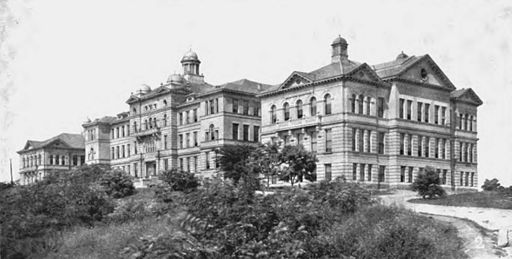Boris Podolsky was a Russian-American senior physicist, who is known for his 1935 quantum mechanics paper co-authored with Albert Einstein and Nathan Rosen. Podolsky was also a Soviet spy, who provided the KGB with atomic bomb secrets.
According to Spies: The Rise and Fall of the KGB in America, a book co-authored by historian John Earl Haynes, Podolsky provided the Soviets with “complex chemical equations on the gaseous diffusion method for separating bomb-grade U-235 from unwanted U-238.” The exchange of information took place at the Soviet Embassy in Washington, D.C. in June of 1943. At the embassy, Podolsky met with the ambassador’s deputy and two KGB officers. For his valuable information, Podolsky received a $300 payment on the spot.
The process of gaseous diffusion was a method being secretly developed at the Manhattan Project’s affiliate at Columbia University. It is unclear how Podolsky gained the information about uranium gaseous diffusion since he did not work on the Manhattan Project. One possible explanation is that his work on non-uranium gaseous diffusion caused him to become a consultant for the scientists at Columbia.
In his interview from the Atomic Heritage Foundation’s Voices of the Manhattan Project website, Haynes notes that Podolsky met with the KGB officers a few more times after their first meeting at the embassy, but this relationship quickly ended because of Podolsky’s disinterest in the Manhattan Project. While the KGB wanted to use Podolsky to access technical and experimental data about the atomic bomb from the Manhattan Project, Podolsky just wanted to return to Russia and become a leading Soviet theoretical physicist. Their lack of agreement led to a parting of ways in November 1943.
Early Years
In 1896, Boris Podolsky was born in Russia. He immigrated to the United States of America in 1911. Podolsky received his Ph.D. from the California Insitute of Technology in 1928. After his studies at the California Insitute of Technology, Podolsky returned to the U.S.S.R. from 1930 to 1933. While in the U.S.S.R., he served as the director of theoretical physics at the Ukrainian Physio-Technical Institute.
He returned to the United States in 1933. A year later, he began to work at the Insitute for Advanced Study (IAS) in Princeton, New Jersey. In 1935, he co-authored the paper, “Can Quantum-Mechanical Description of Physical Reality be Considered Complete?” with Albert Einstein and Nathan Rosen in 1935. The paper is commonly referred to as EPR (for Einstein, Podolsky, and Rosen).
In the paper, the three physicists demonstrate the existence of “quantum entanglement” in quantum mechanics. The entanglement is a type of correlation between two distinct physical systems. After a falling out with Einstein, Podolsky became a professor of mathematical physics at the University of Cincinnati in the 1940s.
Later Years
In 1961, Podolsky left the University of Cincinnati for Xavier University. He taught at Xavier until died in 1966.
For more information about Boris Podolsky and his work, please see the following references:





